#4 in Vietnam
Bún Chả: Ingredients and Preparation
Main Ingredients
Main Cooking Method
Preparation Process
Bún Chả: A Deep Dive
Cultural Significance
Taste
Texture
Aroma
Color
Serving Style
Serving Temperature
Accompaniment
Occasions
Seasons
Special Diets
Calories
Popularity
Popular Similar Dishes
Popular Dining Area
Bún chả is a national specialty of Hanoi in Vietnam, combining coal-grilled pork with noodles and fresh vegetables.
Usually, fatty pork is used for grilling before being soaked or served on a side with a sweet and sour fish sauce mixture (nước chấm).
As for the noodles, locals often use thin rice noodles that are served on a plate for dipping into the fish sauce and grilled mixture. In Hanoi, this traditional and beloved street food dish is always enjoyed during lunch.
Furthermore, the chả, or grilled pork, has two varieties, either coming in balls or pieces.
Typically, the grilled pork meatballs are made of minced shoulder and spices, while the pieces of chả utilize pork belly with no skin to avoid a chewy texture.
For serving, the fish sauce of bún chả comes with slices of young papaya and pickled vegetables like carrots for a crunchy texture.
Stick around to find out more about the places that sell bún chả, the composition of bún chả, and the methods of making this dish.
Then, uncover the correct ways of eating bún chả in Hanoi, along with the good and bad features of eating this grilled pork noodle dish.
Additionally, you shouldn’t miss the chance to learn about the differences between bún chả and phở, some common questions about it, and dishes that share similarities to bún chả.
Key Points
Bún Chả Images
Where to Eat Bún Chả in Vietnam?
To savor the flavor of bún chả in Vietnam, particular in Hanoi, here are a few locations that you should note down in your list:
In Hanoi
Bún Chả Hương Liên
Address 1: 24 Le Van Huu Ward, Phan Chu Trinh, Hai Ba Trung, Ha Noi
Address 2: 14, 59 street, Lang Ha ward, Cho Dua Market, Dong Da, Ha Noi
Opening time: 8 AM – 20 PM
Bún Chả Đắc Kim
Address: 1, Hang Manh Ward, Hang Gai, Hoan Kiem, Ha Noi
Opening time: 9 AM – 9 PM
Bún Chả Duy Diễm
Address: 140, Ngoc Khanh Ward, Giang Vo, Ba Dinh, Ha Noi
Opening time: 7 AM – 8:30 PM
Aside from just finding a location to eat bún chả, you should discover more about the specialty by figuring out the elements that makeup the dish.
Where to Eat Bún Chả in Vietnam?
Here are the components that make bún chả a special dish that anyone needs to try in Hanoi:
- Grilled pork: The pork is often marinated with various ingredients such as garlic, shallots, black pepper, and fish sauce. It is then grilled to achieve a caramelized and slightly charred texture.
- Rice vermicelli noodles: These are thin rice noodles that serve as the base of the dish.
- Dipping sauce: A sweet and sour dipping sauce made from fish sauce, vinegar, sugar, and water, often garnished with sliced green papaya, garlic, and chili.
- Herbs and greens: Bún chả is typically served with a variety of fresh herbs and greens, such as lettuce, mint, and cilantro.
Knowing about the components is one thing, as the process of making bún chả is also exciting for people looking to get to know Vietnamese cuisine.
How to Make Bún Chả?
While the flavor of bún chả seems complex, it all comes from simple ingredients and condiments that contribute to the overall profile. For that, let’s journey through the process required to create bún chả:
Preparing Ingredients
Begin by preparing the main ingredients. This includes rice vermicelli, pork (preferably fatty cuts for grilling), and fresh herbs. Additionally, gather ingredients for the nước chấm dipping sauce, which typically includes fish sauce, sugar, lime, garlic, and chili.
Marinating the Pork
Slice the pork into thin pieces and marinate it with a mixture of seasonings. This includes shallots, garlic, fish sauce, sugar, black pepper, and other preferred spices. Allow the pork to marinate for a few hours or overnight for the best flavor.
Grilling the Pork
Once marinated, grill the pork slices over a charcoal fire until they are golden brown and slightly charred
Preparing the Dipping Sauce (Nước Chấm)
Combine fish sauce, sugar, lime juice, garlic, and chili in a bowl. Adjust the ingredients to taste.
Serving
Place the grilled pork on a plate or into the bowl of dipping sauce. Accompany it with fresh herbs.
To fuel your excitement, don’t forget to learn how locals often enjoy bún chả in its home ground of Hanoi.
How Do You Eat Bún Chả in Hanoi?
To truly enjoy bún chả while you’re in Hanoi, here are the features presented in a meal that you should know:
- Dipping sauce: The dipping sauce, or “nước chấm”, is a crucial part of bún chả. Before eating, taste the sauce and adjust it to your liking. Some locals add garlic or chili to make it spicier.
- Mixing: Take some noodles (bún) and dip them into the sauce. Then, pick up some grilled pork and herbs, and dip them into the sauce as well. Alternatively, mixing everything in a bowl and eating it is a great solution.
- Herbs: Fresh herbs are an essential part of Vietnamese cuisine. With bún chả, you’ll often get a plate of fresh herbs like basil, mint, cilantro, and lettuce. Incorporate these herbs into your bites to enhance the flavor.
- Accompaniments: Bún chả is sometimes served with fried spring rolls (nem rán). Remember to dip them in the sauce!
- Eating utensils: Typically, you’ll use chopsticks to handle the noodles and meat, and a spoon to scoop up the sauce.
I hope you find the components of bún chả make the dish more exciting for consumption. With that said, you should carefully weigh up the benefits and drawbacks of bún chả before eating it.
Pros and Cons of Eating Bún Chả
Bún chả is undoubtedly tasty, but you should also consider all the pros and cons that the specialty has to avoid any unwanted effects on your body:
Pros
Cons
Once you have made your decision to enjoy bún chả, make sure to have a look at how this dish compares to the iconic phở of Vietnam.
What Is the Difference Between Bún Chả and Phở?
Here are a few features that set bún chả apart completely from the iconic phở in Vietnam:

Bún Chả
Origin: Hanoi, Vietnam
Main Ingredients: Grilled pork, rice vermicelli noodles, herbs, dipping sauce
Primary Meat: Grilled pork
Key Characteristics: Noodles served separately from the sauce

Phở
Origin: Northern Vietnam (Nam Dinh Province)
Main Ingredients: Broth, rice noodles, beef/chicken
Primary Meat: Beef or chicken
Key Characteristics: Noodles and meat served in a flavorful broth
After knowing about the differences between bún chả và phở, make sure you have a look at some inquiries related to bún chả.



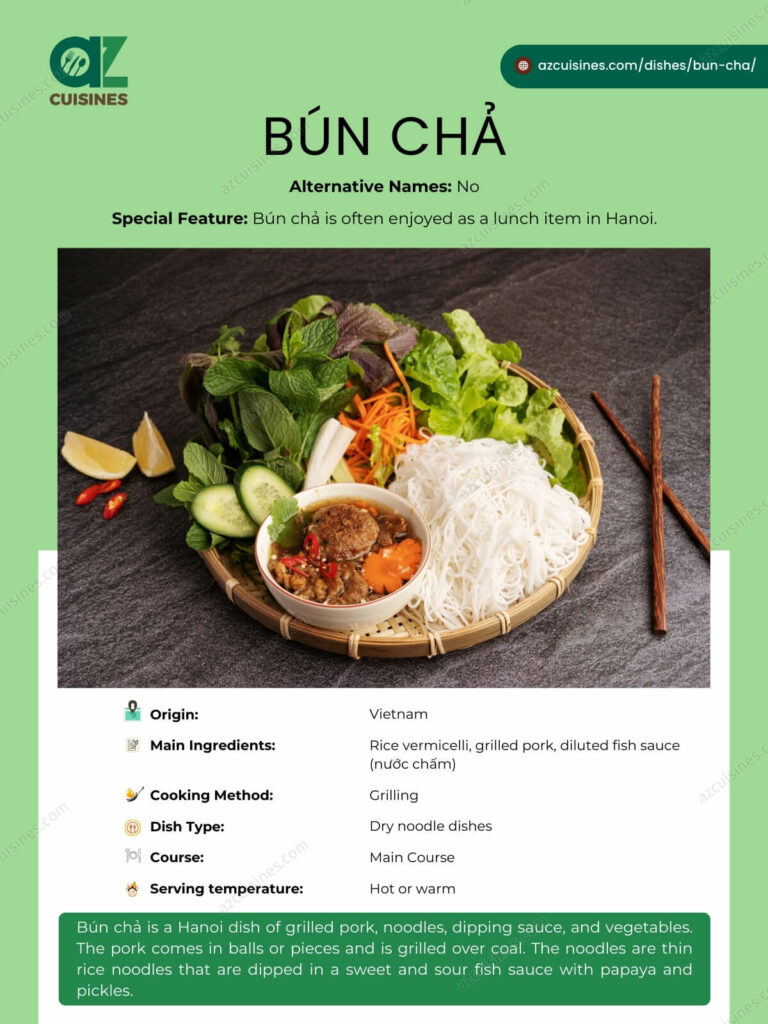
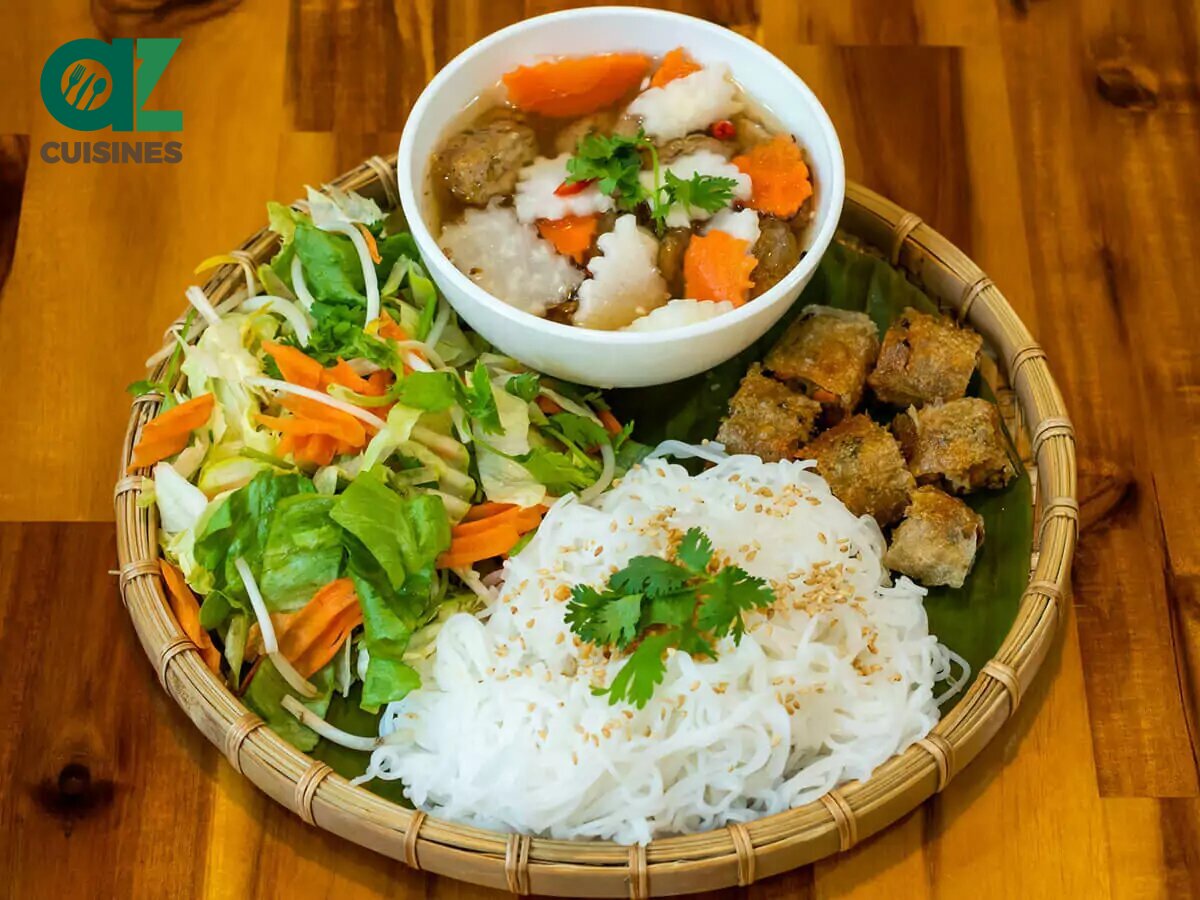
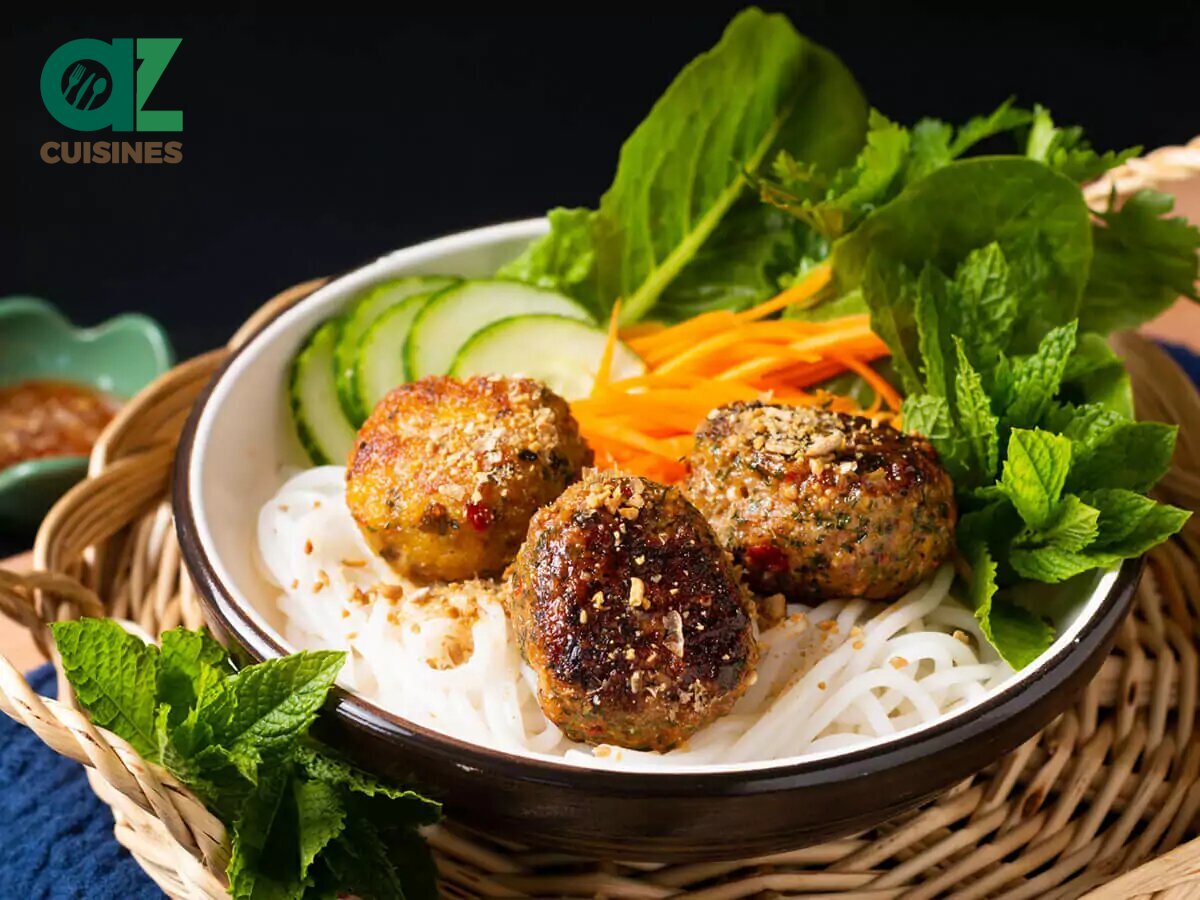

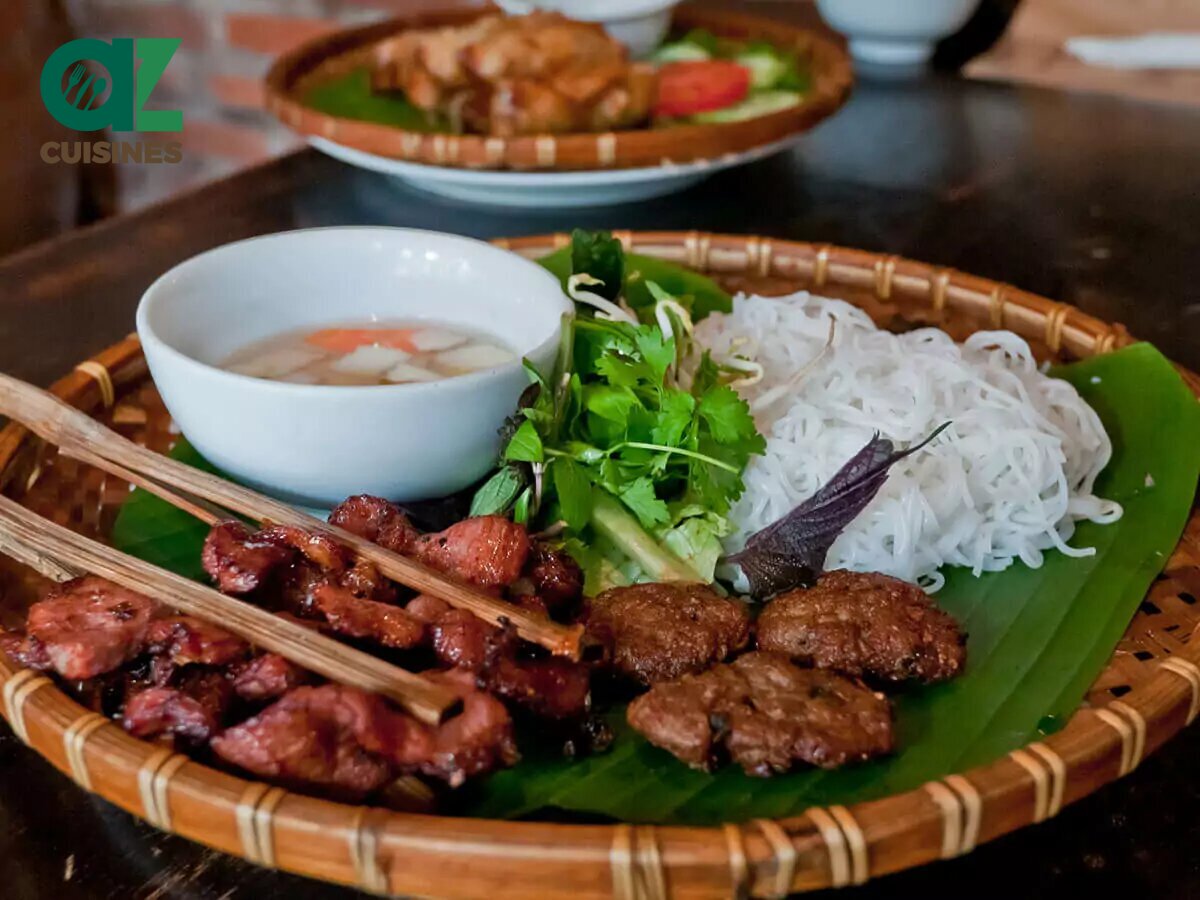
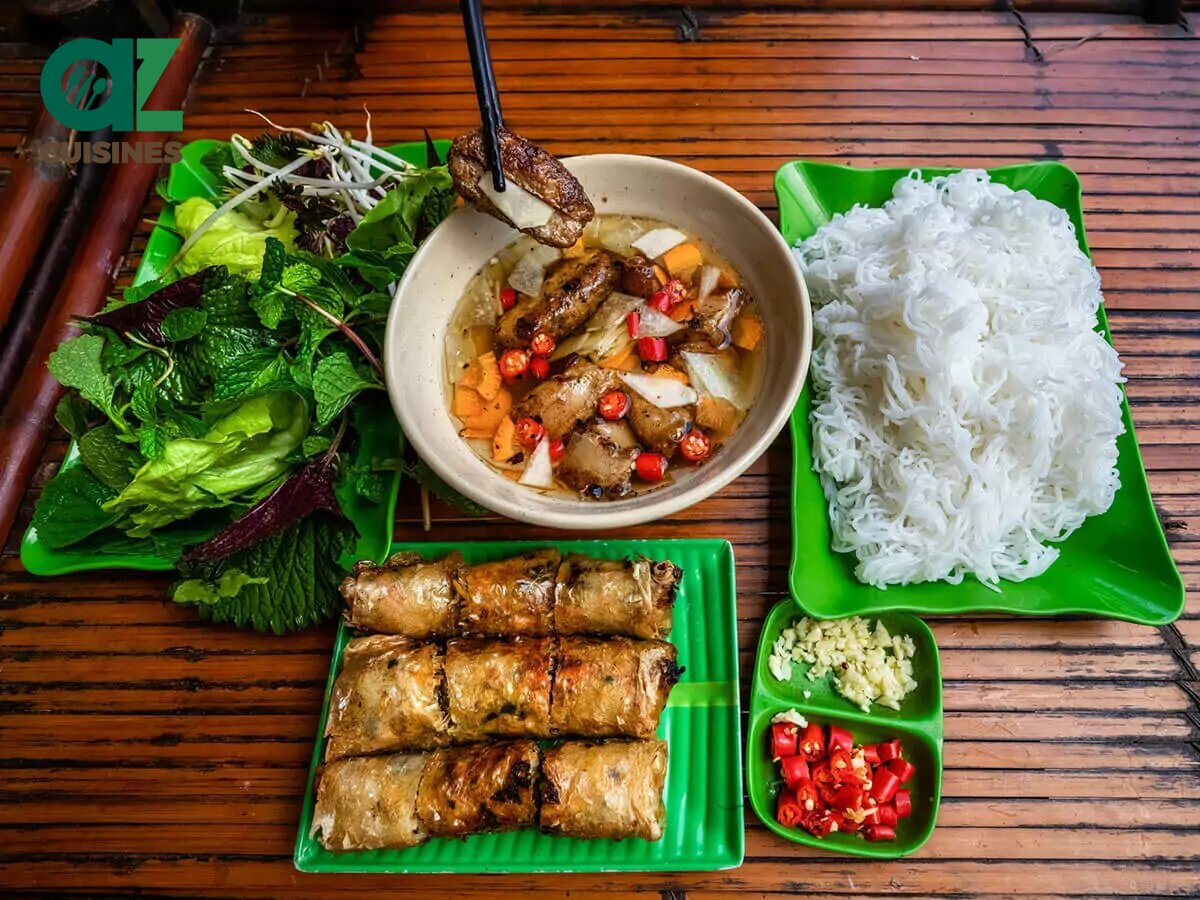

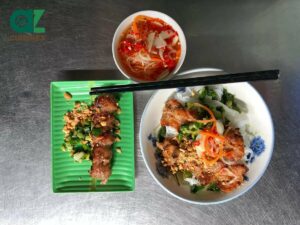
Truc Tran (Kris)
Senior Food Editor
Expertise
Home Cooking, Meal Planning, Recipe Development, Baking and Pastry, Food Editor, Cooking-video Maker, Vietnamese Food Evaluation Expert
Education
Truc Tran (Kris), an experienced food writer and editor, is great at exploring and describing global cuisines, from simple street food to fancy dining. In her writing, she skillfully mixes different flavors, cooking methods, and culinary traditions, showing the unique character of various cultures through their food and drinks. On azcuisines.com, Kris highlights her knowledge, especially in Asian cuisine and worldwide traditional dishes.